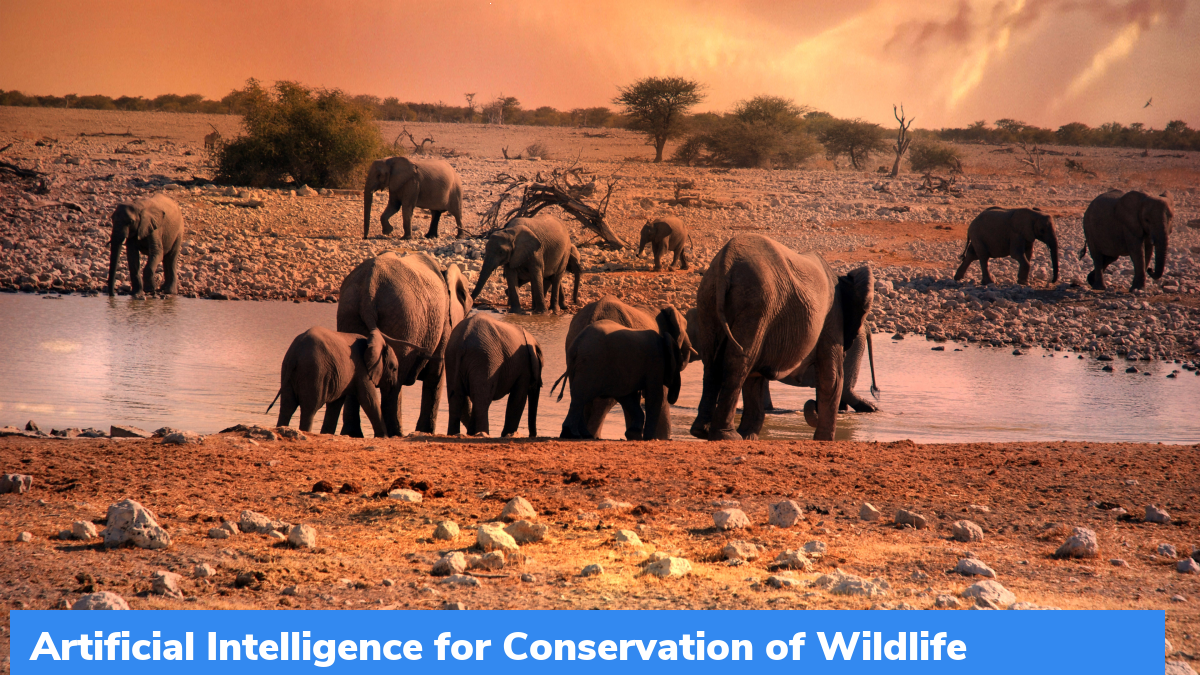PAWS & CAPTURE: Artificial Intelligence for Conservation of Wildlife
Poaching is one of the greatest threats in wildlife conservation, and even patrol rangers are not enough to completely fend off poachers, especially in very large wild life protected areas. Thousands of wild animals are illegally killed for their skin, bones, horns, traditional medicines and trophy hunting. As a result, wild tiger populations have decreased 95% over the past 100 years, black rhinos have reduced by 98% since 1960, and more than 30,000 elephants are killed each year for their ivory.
Therefore, with support from the National Science Foundation (NSF) and the Army Research Office, researchers are using artificial intelligence (AI) and game theory to solve poaching, illegal logging and other problems worldwide, in collaboration with researchers and conservationists in the U.S., Singapore, Netherlands and Malaysia. This article focuses on PAWS and CAPTURE particularly.
Important Facts
- The AI-driven system was developed by researchers at the University of Southern California (USC). Aptly named Protection Assistant for Wildlife Security (PAWS), the A.I. essentially plays “green security games”, or game theory for wildlife protection.
- Game theory is “the study of mathematical models of conflict and cooperation between intelligent rational decision-makers.” It’s mainly used in economics and psychology to predict outcomes, but game theory can work just as well wherever coordinated human activity is involved.
- Previously, similar methods were used by the Coast Guard and Transporation Security Administration to improve airport and waterway security. And in this case using mathematical equations, the game theory model can predict what the poachers will do before they even do it, leading to a more effective patrol system.
- Protection Assistant for Wildlife Sanctuary (PAWS) was developed in 2013. It was tested in Uganda and Malaysia where there was a desperate needs for patrol assistance in protecting wildlife especially elephants. It uses mathematical models to effectively analyze data from previous patrols and evidence of poaching. The more data fed to the application, the more it can “learn” the topography, terrain, natural paths, foot traffic and animal traffic of the protective area. As a result, the application can map out practical patrol routes that can minimize time, energy and resources. The application also has the ability to randomize patrol routes, making it difficult for poachers to predict any types of discernible patterns.
- To deal with this problem, PAWS was combined with another algorithm, called CAPTURE (Comprehensive Anti-Poaching Tool with Temporal and Observation Uncertainty Reasoning) to predict the probable routes of poacher’s attack. CAPTURE provides some main contributions. First, CAPTURE’s modelling of poachers provides significant advances over previous models from behavioural game theory and conservation biology. This accounts for:
- The defender’s imperfect detection of poaching signs;
- Complex temporal dependencies in the poacher’s behaviours
- Lack of knowledge of numbers of poachers.
- Second, we provide two new heuristics: parameter separation and target abstraction to reduce the computational complexity in learning the poacher models. Third, we present a new game-theoretic algorithm for computing the defender’s optimal patrolling given the complex poacher model.
- Similarly, SORT (Simultaneous Optimization of Resource Teams) technique is discovered to combat illegal loggers.
Questions for Analysis
- Analyze the pros and cons of PAWS.
- How Game Theory based AI tools can help us to tackle challenges like wildlife conservation?
Analyze the pros and cons of PAWS.
PAWS generates route suggestions for patrollers. Its algorithm takes into account not only animal densities and previous poaching incidents, but also topography, elevation and hydrography. Based on all this information, PAWS then generates maps with easy routes for the patrollers that maximise their chances of catching poachers. The routes are randomised to increase the change of catching poachers unexpectedly. Further, PAWS focuses on generating effective patrols for the rangers, taking into account the complex topographic conditions of Asian forests.
Despite its successful application, PAWS is known to suffer from several limitations. Firstly, PAWS relies on an existing adversary behaviour model known as Subjective Utility Quantal Response (SUQR), which makes several limiting assumptions such as (a) all poaching signs are perfectly observable by the rangers; (b) poachers’ activities in one time period are independent of their activities in previous or future time periods; (c) the number of poachers is known. So SUQR’s modelling falls short in modelling and prediction of poacher behaviour, taking into account the entire detailed domain features. Secondly, SUQR has not been able to provide a detailed analysis of the impact of environmental and terrain features on poacher behaviour, and thus such analysis of real world data has been lacking in the literature.
How Game Theory based AI tools can help us to tackle challenges like wildlife conservation?
Game theory is a branch of mathematics which uses the strategies to deal with competitive situations involving multiple participants. Traditionally it is used in economics and psychology to understand human behaviour. In a security scenario, the attackers and defenders can be thought of as different agents involved in a game where the attackers seek to maximise their rewards, and the defenders aim to minimise their losses. In this context, the scientific devices like PAWS and CAPTURE have been discovered in the field of artificial intelligence by using the game theory. They have been used to capture poachers by detecting their propable attack routes. The core algorithm of PAWS is based on security games, a subset of game theory where a defender tries to optimize limited resources to prevent attacks. It is through some of these ways, AI can help in wildlife poaching.


